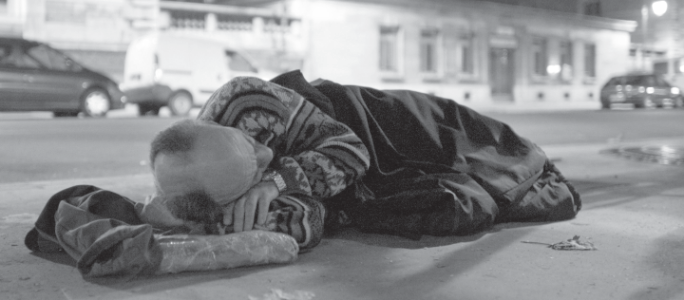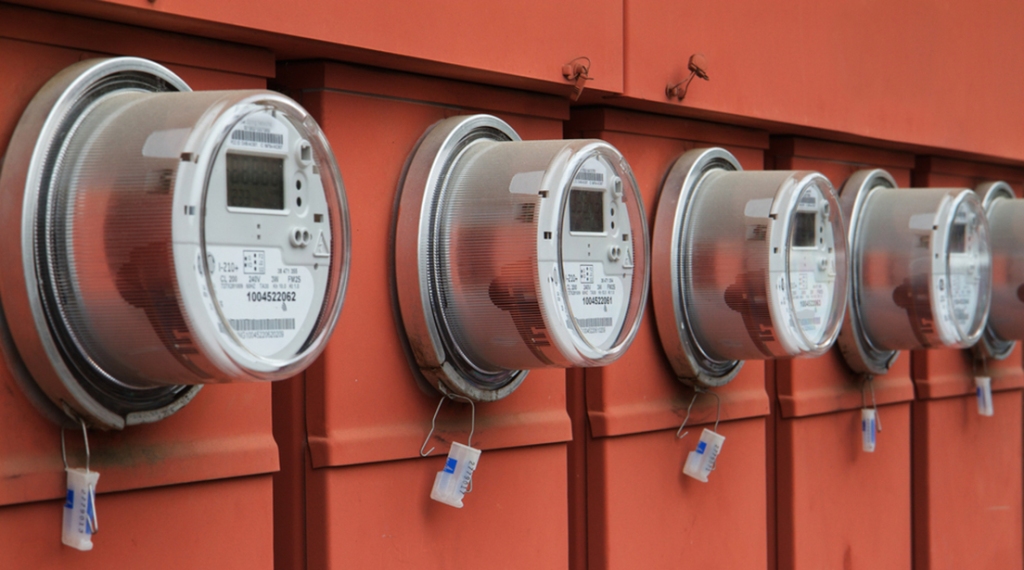“Twenty years from now, the idea that someone looking for love won’t look for it online will be silly, akin to skipping the card catalog to instead wander the stacks because the right books are found only by accident.”
— Rufus Griscom Wired Magazine, 2002
The modern era of digital courtship allows everyone seeking love to sift through an infinite stream of potential suitors. But are more options always better? And what does that mean when it comes time to choose just one lifelong partner? That was always the point, right? To find enduring love – a soulmate?
Have you ever seen a child selecting a flavor at Baskin Robbins? Deciding between 31 different ice-cream flavors as a child is a special form of torture. Choosing chocolate over vanilla is a rather simple decision. But increasing the available options also increases the fear of missing out (FOMO), which makes that final decision an excruciating endeavor.
A study in 1995 conducted at a California grocery store attempted to quantify our inability to choose when the pool of choice is increased. The researcher handed out coupons for heavily discounted jam at an endcap kiosk but rotated the amount of presented jams each hour. One hour, a passerby could select from six jams, the next hour that number increased to 24.
The larger assortment of jams attracted more attention, a total of 60 percent of customers were drawn to the display. When the display dropped to just six jams, attention dropped to 40 percent.
But attention alone is not entirely a statement of choice.
The Burden of Choice
A peculiar thing happened when the time came to actually purchase the selected jam. Those attracted to the display of 24 jars only bought the jam three percent of the time. Those attracted to the stand with just six jams presented, purchased the jam 30 percent of the time.
By a ten-to-one margin, less choice resulted in more sales.
The researcher responsible for this social experiment concluded that the presence of choice might seem appealing in theory, “but in reality, people might find more and more choice to actually be debilitating.”
Quite simply, the doubt in oneself to make a confident decision when presented with overwhelming choice often erodes one’s ability to make any choice at all. Perhaps the increase of available choices make it seem one could select a better option, which lays the seed of doubt in whichever choice one actually ends up making.
A possible explanation for this is that our expectation rises along with additional options. There’s a term for this, and it’s unfortunate that we can now apply it to our dating life:
Buyer’s Remorse
If additional options increase expectation and the resulting regret subtracts from satisfaction, why can’t we just be happy with the person we’ve chosen to date?
The hunt for the best doesn’t stop after we make our initial choice to date someone. We wonder if other matches might also make that weird noise when they sleep; or if someone else would be such a terrible tipper… Or, maybe that match you passed up for being too short might have made a better mate in the long run? This constant nitpicking and self-doubt lead to a disquieting discontentment as we wonder what might have been.
And that loop only intensifies as we continue to inundate ourselves with additional choices. We lay awake, endlessly swiping past even more potential suitors. You have so many options! So many choices! Your mind swells with the fantastic possibilities of those new options as you hold each against the reality of your current choice.
So, you’ll continue to stew over what could be, or what might have been.
“There’s no question that some choice is better than none, but it doesn’t follow from that, that more choice is better than some choice.”
— Barry Schwartz Author of The Paradox of Choice

Technology Evolves Faster than Humans
We haven’t yet fully grasped the effects that rapidly advancing technology will have on humanity. We’ve fully integrated these marvelous trinkets into our lives without much thought; but will the iPhone one day carry a Surgeon General’s warning like cigarettes do now?
We’ve already proven how we willingly erode our fragile decision-making process. But, thanks to the rise of smartphones, humankind’s attention span is now rated at eight seconds, a full second shorter than a goldfish.
We’re now also discovering the toll smartphone use has on our bodies as well. The simple act of using your phone can lead to a dangerous nerve condition called occipital neuralgia, which is caused by constantly tilting our heads down to look at our phones. The symptoms can include a permanent headache and severe tenderness of the scalp.
Technology is becoming such a large part of our lives that it is literally changing how we look as a species. Humans created technology, but technology is crafting the future of human evolution.

The Rise of the TechnoSexual Era
As device advancements leapfrog previous iterations every few years, and we hurtle towards an always-on, ever-connected future, we ourselves are beginning to change as well. Enter the technosexual era. We are developing entirely new psychoses and phobias that only a mere decade ago would’ve sounded like a plot from a sci-fi film.
Nomophobia is the fear of being out of mobile contact. This is deeper than the fear of just being bored in the doctor’s waiting room. This is a debilitating fear of being out of the loop. It’s the fear that someone might be trying to contact you when you can’t connect. And worse still, nomophobia might just be a small side effect of technology’s bigger effect on our transactive memory.
We are now less likely to retain the information that we know we can easily access through our phones.
Having Google in your pocket can deteriorate your ability to remember those facts that made you whip out your phone and prove your knowledge at the bar. Recent studies show that having a nearly omniscient, omnipresent device by our side will train our brains to treat our tech trinkets like a relationship partner. This means your brain knows little difference between the lovesick signals triggered when your lover is away and the nomophobia of forgetting your phone at home.
So, We’re in Love with Our Phones?
Not sexually, but yes. And that relationship with technology is changing how we communicate with other humans. The immediacy and availability of options and the speed in which we can connect leads to us spending more time vetting each romantic candidate.
In fact, Eve Peters, the co-founder of the new dating app Whim ran a study on just that. “We found that less than 10 percent of matches result in real-life dates and that it takes an average of two weeks of texting back and forth to eventually get out on a date. What that means is, on average, you’ve got to be texting back and forth with 10 people for two weeks to just get one date,” she said.
Compound this research with a new phenomenon called The Tinder Effect and we begin to see the true state of dating in 2016.

The Tinder Effect
If you’re not familiar with the term gamification, you’re not unfamiliar with the effects. Gamification takes the rewarding elements of a video game and adds it to non-gaming applications. Elements like a high score, pleasingly crisp sound effects for simple actions, awarding digital badges, and any progression mechanics like leveling up are all components that can be applied to a non-game environment to improve user attachment.
Fitbit awards profile badges for the distance you’ve walked. LinkedIn rates the quality of your page with a score. And loyalty programs that incentivize return visits like those found at grocery stores are also a form of gamification.
Tinder’s groundbreaking hot-or-not right-left swiping mechanic effectively gamifies finding a match. The satisfaction of swiping right and discovering that this same user also swiped right on you can feel deeply pleasing.
Of course, the gamification of romantic courtship comes at a cost. Adrenaline, endorphins, dopamine, serotonin and oxytocin are all activated during the natural romantic courtship process. But it’s been found that this Tinder Effect makes the brain release a dangerously similar mixture of chemicals when users become delighted by these gamified elements within the app.
This means one could derive a similar amount of pleasure from the mere act of swiping through matches as someone going through the work of actually dating. This might explain why it takes many users two weeks while chatting with 10 matches to line up one date. For many, a date might not even be desired.
The Rise of the Anti-Tinder
Tinder’s market share and influence on modern dating is undeniable. But like all pendulum swings, it won’t be long before others rise in popularity on the premise of being the antithesis.
Bumble, a dating app created by an ex-Tinder employee aims to shift the power of communication to the hands of the ladies. Women bear the brunt of curt and brutish pickup attempts on most dating platforms. Bumble turns the tables and requires women to initiate the conversation, which may smooth out the headache of receiving a deluge of inane and often explicit chats on other dating platforms.
Neqtr approaches dating through the activist causes you hold dear to your heart. The hope is that this app will connect people on a deeper level than a few good profile pictures.
As we shake off our Tinder-conditioned drive to swipe, only time will tell if these new apps will provide more tailored matches for those engaged in our modern digital-dating culture.

Takeaway
So, where does this leave us? Is there any hope to find love and be happy in this technology-obsessed world? Well, absolutely!
In fact, now more than ever you are capable of finding someone truly special. The one thing that needs to change is our instinctual pursuit of finding the Best.
Finding the Best is an impossible goal, because life is fluid and people change. Perfection need not apply; best is merely ephemeral, momentary. But technology shrouds our ability to see that futility. So, it’s up to us to change, grow and evolve.
“So, you mean settle?” Or you can just understand that an algorithm designed to match cherry-picked data about our online selves might not be the most surefire way to find capital-T True Love. It’s a great tool to help us meet people, but then our real work begins.
The best place to start is to understand a simple distinction between digital life and daily life. As much as technology wishes to blur the lines between reality and fantasy, you cannot hold the impossible expectations of digital fantasy against the day-to-day realities of loving a single person.
If you find yourself envying the green grass of another’s lawn, it may just mean that it’s time to do a little yard work of your own.







